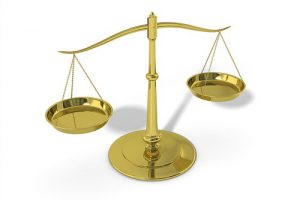Recently we did a feature on Section 504. However, a Section 504 Plan and an IEP, or Individualized Education Program, are mentioned together. But what is an IEP? Is it different from Section 504?
First let’s discuss what an IEP is …
What is an Individualized Education Program (IEP)?
The Individualized Education Program is a written document that is created to meet the learning needs of any public school student requiring special education.
Is an IEP enforced under a law?
Yes, an IEP falls under our nation’s federal law called Individuals with Disabilities Education Act or IDEA. The IDEA is intended to focus on the student and provide rights and protections to children with disabilities and to their parents.
Who is eligible for an IEP?
A student must be found to have one of 13 disabilities that are covered under IDEA. The list includes specific learning disabilities, autism, and emotional impairment to name a few. The full list of disabilities included under IDEA are listed here. Also, to be eligible, the disability must impact the child’s ability to benefit from the general education program.
If I have a learning disability, does that mean I automatically qualify for an IEP?
No, not every child with learning and attention issues is eligible for an IEP. An individual evaluation must be carried out to determine whether someone is eligible for an IEP. The disability must affect the student’s ability to make progress and benefit from school.
What does an evaluation mean?
An evaluation will look at all areas of a child’s life related to a suspected disability. The evaluation will be used to decide whether the child is eligible for special education and related services.
How do I get an evaluation?
Anyone can request an evaluation for a child. For example, a teacher may request a child be evaluated. Parents may also contact the school to request that their child be evaluated. The request may be verbal or in writing. It is usually best practice to talk to a parent, trusted teacher, special education teacher, counselor, or pediatrician with any questions or concerns. Also, parental consent is needed before any student may be evaluated!
What if I am found eligible following my evaluation?
If the evaluation reveals that a student is eligible then the next step will be to create an IEP. An IEP is created through a team effort and must be reviewed at least once a year. By law, certain individuals must be included in writing a child’s IEP, and the best IEPs are created through teamwork!
What’s included in an IEP?
An IEP is specific to each individual student. This means not every IEP will appear the same. However, by law, an IEP must contain certain information. In general, an IEP will contain information such as:
- the child’s current level of performance in school
- the yearly goals for the child
- the special education and related services to be provided to the child.
It can be helpful to try to think of an IEP as a blue print!
Can I be involved in developing my own IEP?
Absolutely! If appropriate, it is encouraged that the child be involved in writing their own IEPs. The involvement of the child’s parent or guardian is also strongly supported. An IEP provides an opportunity for a team of people to work together to improve the education for a student with a disability.
What if I am found ineligible after my evaluation?
Do not give up hope! It is important to discuss other options or any concerns with a school professional (e.g., principal, special education teacher or counselor) or person from the evaluation team. Also, you can still try to access services by pursuing a 504 Plan.
What’s the difference between IEPs and 504 Plans?
There are several differences between an IEP and a Section 504 Plan. For example, a child must have one of 13 disabilities to be eligible for an IEP. However, Section 504 Plans include any disability. Also, the rules surrounding an IEP are much stricter than for a Section 504 Plan. Want to know more about the difference between IEPs and 504 Plans? Visit Understood.org for their chart that compares both IEPs and 504 Plans to help you better understand.
Have more questions?
To learn more visit the following websites:
If you have any questions or comments about the subject of today’s blog post, please let us know! We’d love to hear from you!




















Recent Comments